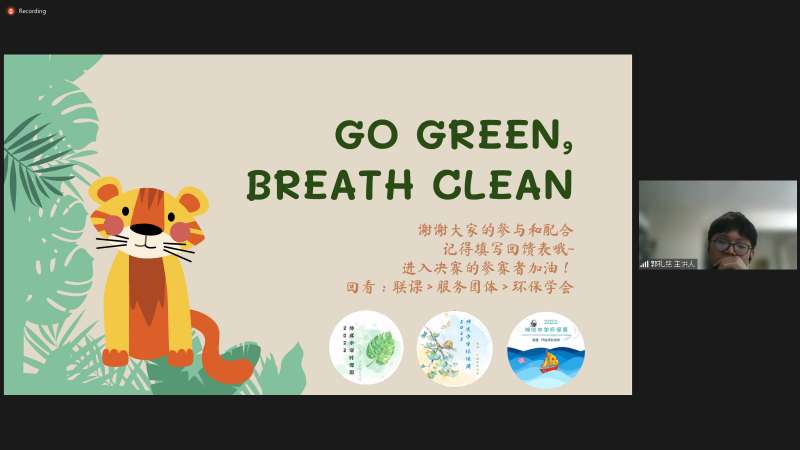Reported by:
Khoo Xin Yi Sr1ScA
To conserve our planet is to conserve our kind. On the 9th of June, the Kuen Cheng High School Environmental Society organized a webinar about wildlife conservation in order to raise greater awareness about endangered wildlife. The webinar lasted around an hour, from 12:00p.m. to 1:00p.m.
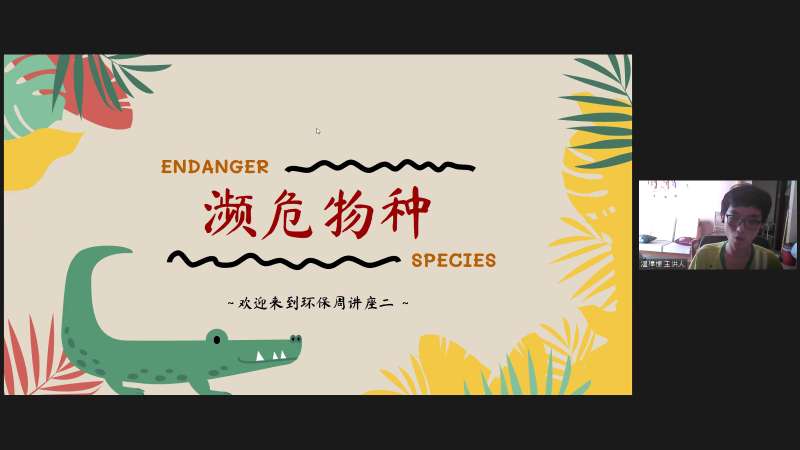
The webinar started off with a brief introduction by the two speakers, Woon Wei De and Kuek Levin. They first asked the participants if they knew what it meant for a plant or animal to be endangered. That being said, Wei De explained that an endangered species is a species that is on the brink of extinction, which may be due to human activity, such as illegal logging, illegal hunting, forest fires, agricultural activities, pollution, global warming, infestations etc.
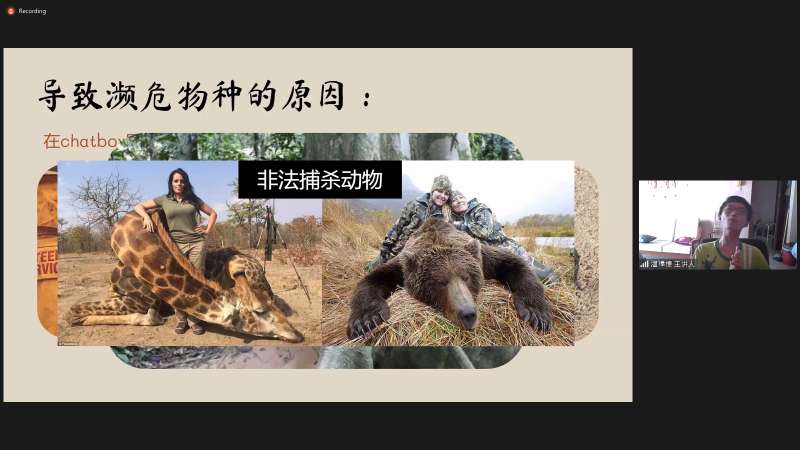
Illegal Hunting
Following up, the speakers enlightened the participants on the nine categories of conservation status. According to the IUCN (International Union for Conservation of Nature) Red List of Threatened Species, the levels of endangerment are divided as follows: not evaluated, data deficient, least concern, near threatened, vulnerable, endangered, critically endangered, extinct in the wild and extinct.
Wei De proceeded to bring up various examples of extinct and endangered animals such as the already-extinct Japanese otter, or the South China Tiger which is currently extinct in the wild. However, the speakers also shared some good news regarding the South China Tiger, informing participants that two new cubs were born on the first day of the year. Another critically endangered species is the Vaquita, a species of porpoise that is hunted for medical purposes. Apart from that, dugongs are also endangered marine creatures.
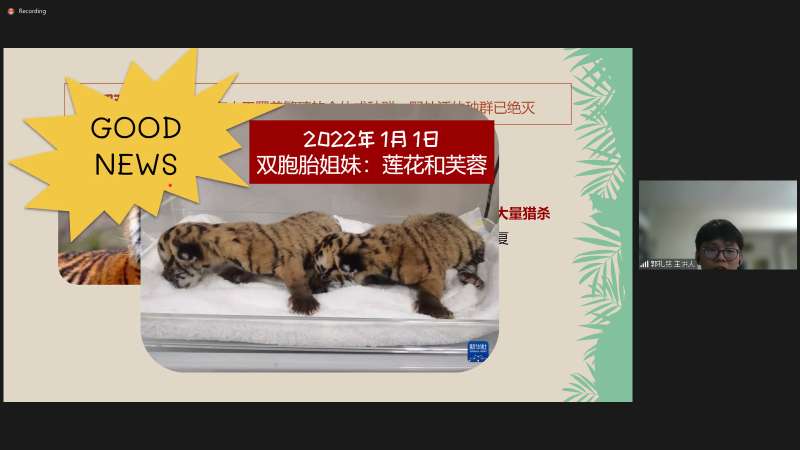
New Born South China Tiger Cubs
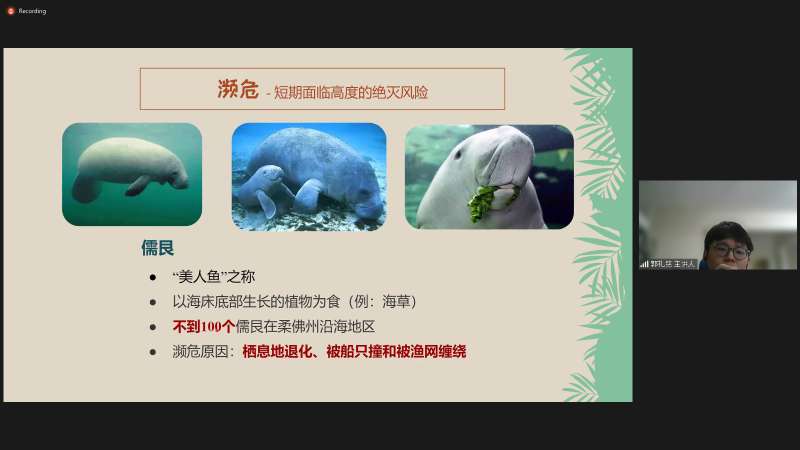
Endangered Dugongs
The speakers then spoke about snow leopards, even bringing up a short story about a snow leopard cub trying to surprise its mother in a Japanese zoo. Cute pictures of the snow leopards were displayed as Speaker Levin explained how these adorable creatures are hunted for their skin and known as vulnerable species.
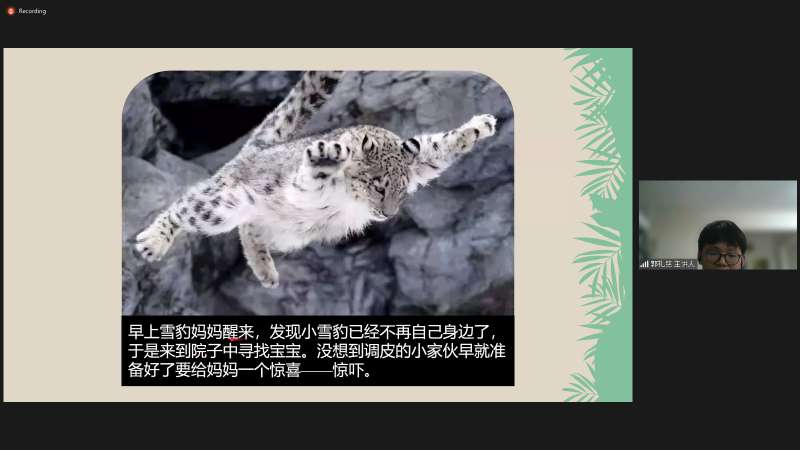
Snow Leopard Short Story
Thereafter, the speakers gave some examples of endangered plant species, like the extinct Nymphaea Thermarum and the critically endangered Lavender plant. In Malaysia, Fairy Lanterns are known to be critically endangered due to always being stomped on and destroyed by wild boars.
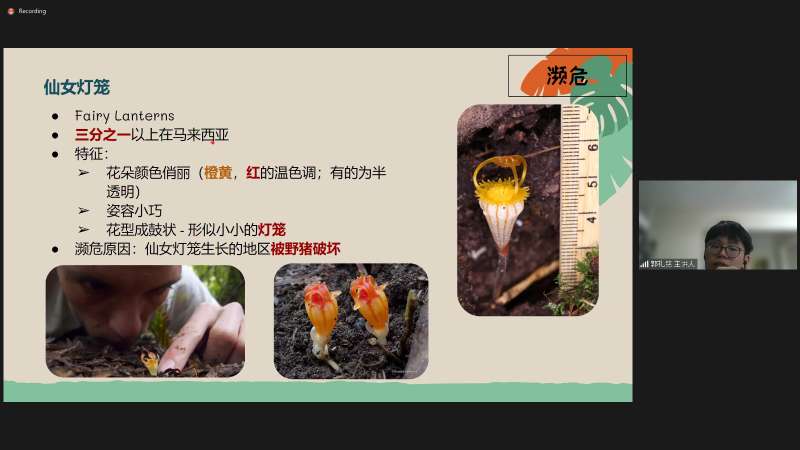
Critically Endangered Fairy Lanterns
Moving on, Speaker Wei De talked about the consequences of wildlife extinction and endangerment. He explained that the endangerment of a single species can cause a chain reaction and lead to an imbalance in the ecosystem. If a species goes extinct, they lose their place in the food chain and thus bring imbalance to local ecosystems. This may damage the population of other wildlife species and affect humans as well.
Next up were some ways to protect and conserve wildlife. The methods were split into 3 sectors, namely at a national level, an international level and personal level. Levin gave an overview of the conservatories built in Malaysia. These conservatories are meant to protect plants and animals while also acting as a natural museum, which may attract more tourists and spread awareness to the public. One such example would be Reef Check Malaysia, an organization that aims to protect coral reefs around the country. The organization often checks local coral reefs for any damages or threats and formulates plans to prevent the corals from bleaching or dying.
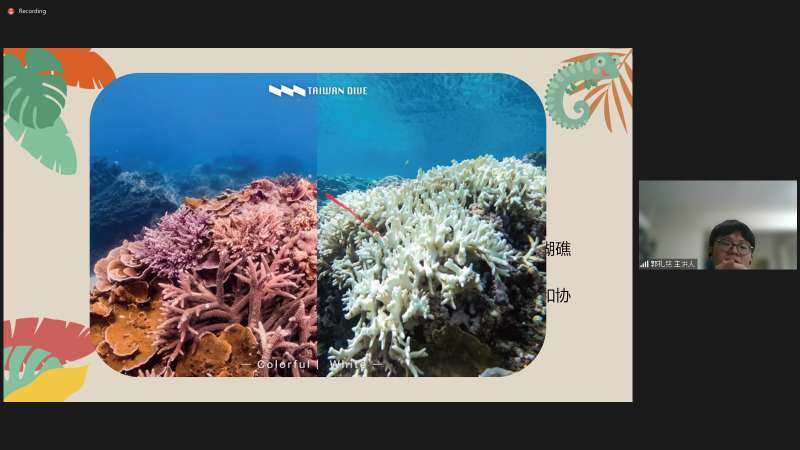
Normal Coral Reef vs Bleached Coral Reef
The participants were then shown a video which explained the reason corals are bleached and die. The causes of this phenomenon are mainly attributed to global warming. It was also made clear that corals are a good source of sustenance for marine creatures. Thus, if coral reefs fail to be protected, the lack of such wildlife may cause an imbalance in marine ecosystems.
Another example of a wildlife conservation association is the Bornean Sun Bear Conservation Center. Located in Sabah, the conservation center is dedicated to rescue and rehabilitate sun bears. However, not all wildlife associations are ethical. For instance, the Sedili Kecil Horseshoe Crab Hatchery and Breeding Center is an association focused on breeding and extracting the blue coloured blood out of horseshoe crabs in order to obtain its medicinal properties. The speakers even brought up black-footed ferrets, which are the test subjects of cloning-technology.
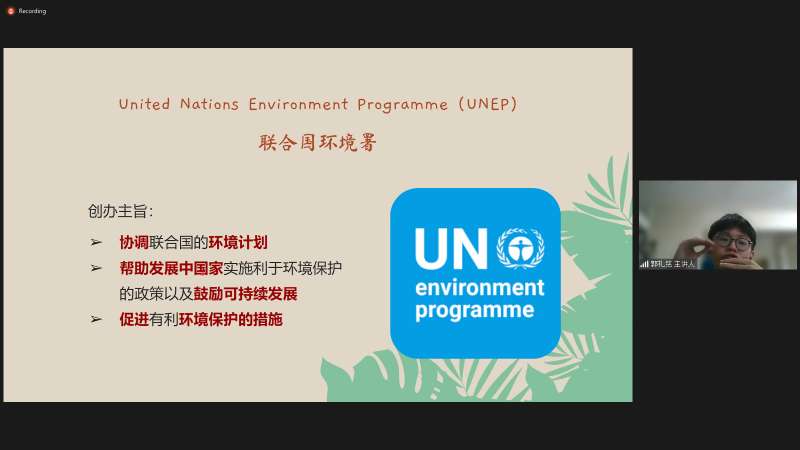
United Nations Environment Programme
On an international scale, the United Nations Environmental Programme (UNEP) is well-known for its dedication towards wildlife conservation research. Every year, the UNEP declares the official date and theme of World Environment Day, which was on the 5th.of June this year with the theme of “Only One Earth”. Levin also talked about how whales are known to be “swimming ecosystems” due to the sheer amount of fertilizer their droppings can hold, which in turn allows sea algae to grow abundantly. It was said that 90% of the oxygen in the world’s atmosphere comes from the photosynthesis of sea flora. Besides, even when a whale dies, the carbon in their bodies does not escape for centuries, and other marine creatures may feast on their corpses for some time.
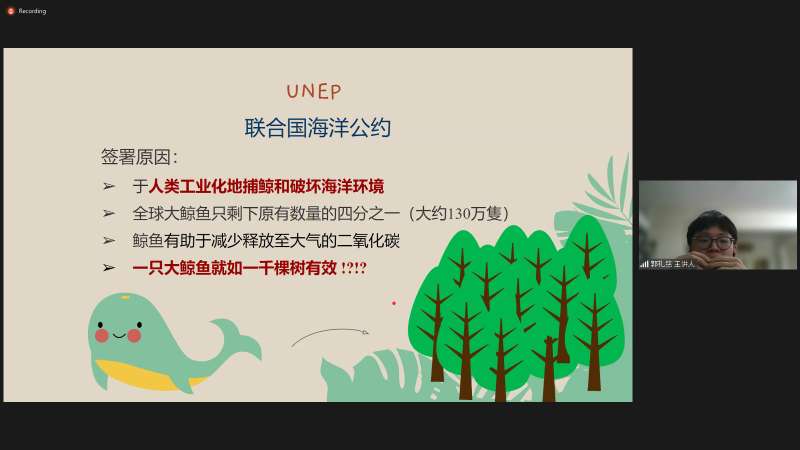
UNEP’s Research on Whales
Lastly, the speakers brought a final question to the table, asking participants what they think they, personally, can do in terms of wildlife conservation. Some of them responded with the 5R concept, namely reduce, reuse, refuse, recycle and repurpose. According to the speakers, the most obvious answers were still to learn more about wildlife conservation, provide fundings to raise animals in conservation centers, not buy animal skin products, reduce usage of plastic items, volunteer in environmental activities, use green technology, reduce our carbon footprint and more.
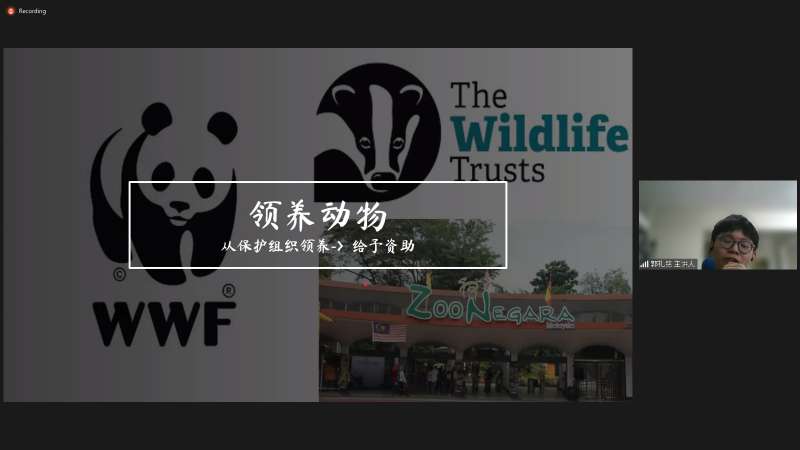
Adopting Animals to be Raised Conservation Centers
To conclude the webinar, the speakers reminded the participants about how important wildlife conservation is. They noted that we, as humans, need the Earth in order to survive, but the Earth could most likely live just fine without us. Thus, it is our responsibility to take care of the planet instead of destroying it. The webinar then ended with a quick group photo.
